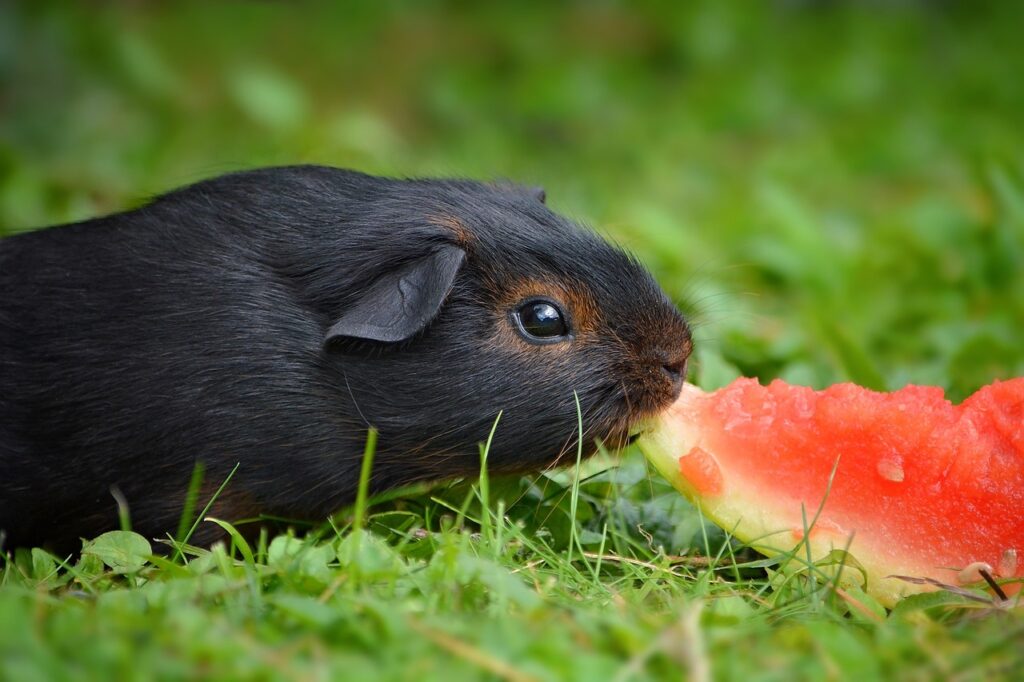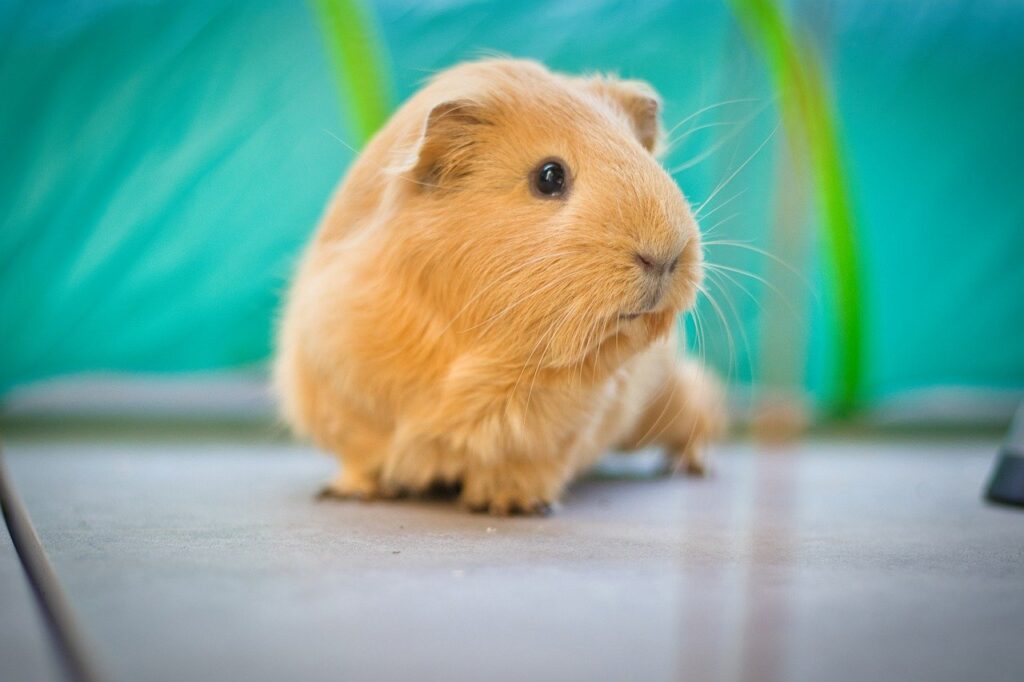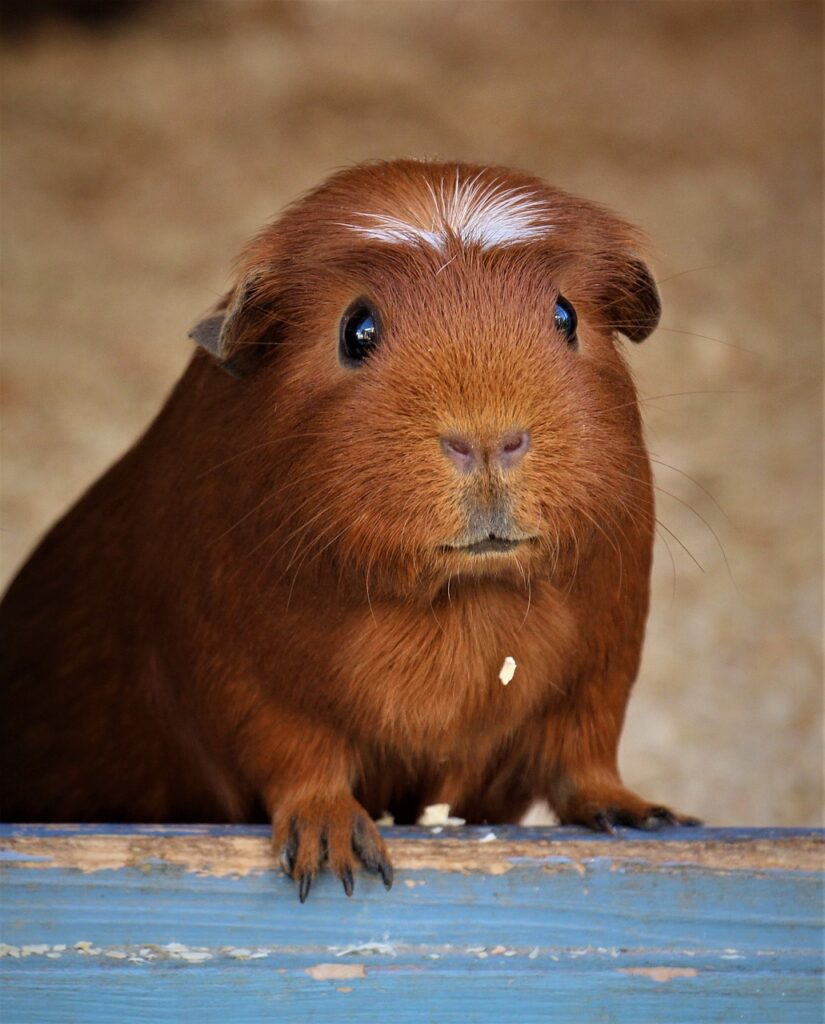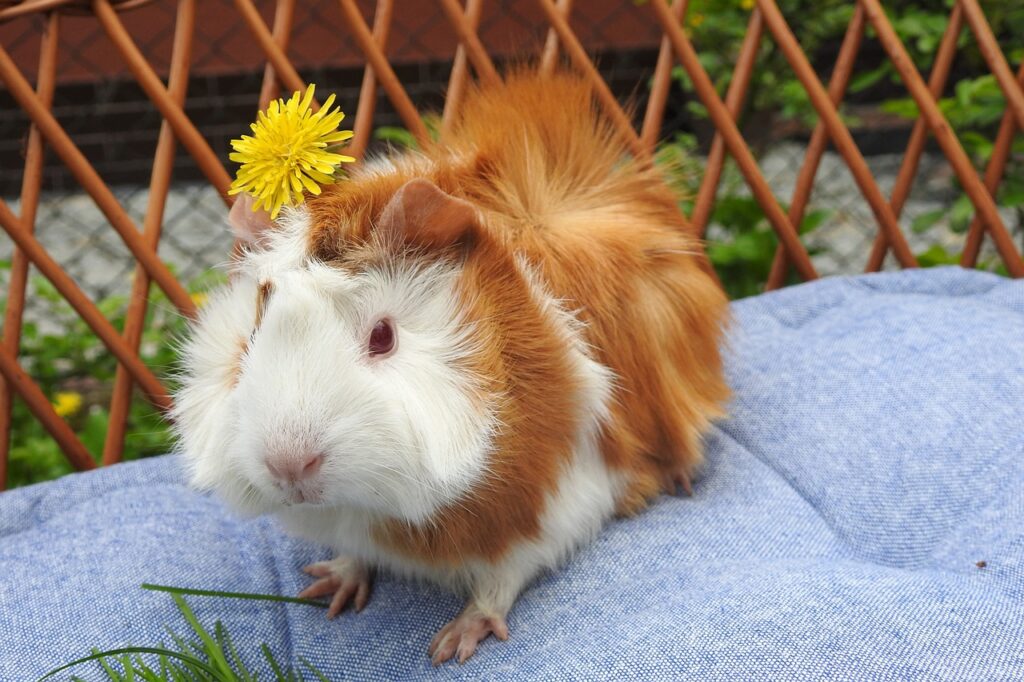
Himalayan Guinea Pig
Facts at a glance!
Weight: 1.5 to 2.5 pounds
Coat Type: Short hair
Colors: White bodies with dark black or chocolate points
Lifespan: 5 to 7 years
Introduction
Himalayan guinea pigs are a unique breed, often referred to as the “Siamese cats of the guinea pig world” due to their distinctive coloring, or the “Himi”. These small, social rodents are known for their calm personalities and relatively easy care requirements, making them a good choice for a pet for both first-time and experienced owners. In this breed spotlight, we will delve into the history, personality, physical characteristics, and essential care practices for Himalayan guinea pigs, helping potential owners understand why these gorgeous guinea pigs make such wonderful pets.
History and Origin
Himalayan guinea pigs, despite their name, do not originate from the Himalayan mountain region. Their name is derived from their striking color pattern, which is reminiscent of the Himalayan (or Siamese) cats. The breed is believed to have been developed through selective breeding in England during the early 20th century. Breeders sought to create a guinea pig with a distinctive color pattern featuring a white body with darker points on the ears, nose, and feet.
The origins of guinea pigs as a species trace back to the Andean region of South America, where they were domesticated by indigenous people over 3,000 years ago. These small rodents, known as “cavies,” were originally bred for food and later became important in cultural and religious practices. European explorers and traders brought guinea pigs to Europe in the 16th century, where they quickly gained popularity as pets.
Personality
Himalayan guinea pigs are known for their friendly and social nature. They are generally calm and gentle, making them excellent companions for families, including those with children. These guinea pigs are highly social animals that thrive on interaction with their owners and other guinea pigs. They are known to form strong bonds with their human caretakers and often enjoy being petted and handled.
One of the most endearing traits of Himalayan guinea pigs is their vocalization. They communicate through a variety of sounds, including squeaks, purrs, and whistles, each conveying different emotions or needs.
Himalayan guinea pigs are also curious and playful. They enjoy exploring their environment, playing with toys, and engaging in activities that stimulate their minds. Providing them with a variety of toys and opportunities for exploration can help keep them mentally and physically stimulated.
Physical Characteristics
The most distinctive feature of Himalayan guinea pigs is their striking color pattern. They have a predominantly white or cream-colored body with darker points on their ears, nose, and feet. These points are typically a rich, dark brown or black, and they contrast beautifully with the lighter body color. The contrast becomes more pronounced as the guinea pig matures, with the points becoming darker over time.
Himalayan guinea pigs have a short, smooth coat that requires minimal grooming. Their fur is dense and soft, providing them with a plush appearance. These guinea pigs have a compact, sturdy body with a rounded shape. They typically weigh between 1.5 to 2.5 pounds and measure about 8 to 10 inches in length.
One interesting aspect of Himalayan guinea pigs is their sensitivity to temperature. The color of their points can change depending on the ambient temperature. In cooler temperatures, the points may become darker and more pronounced, while in warmer conditions, the points may lighten. This temperature sensitivity adds an intriguing dynamic to their appearance.
Care and Maintenance
Don’t forget to locate a good exotic vet with experience treating guinea pigs!
Caring for a Himalayan guinea pig is relatively straightforward, but it requires a commitment to ensuring their well-being. Here are some key aspects of their care and maintenance:
Housing: Himalayan guinea pigs need a spacious and safe enclosure. A guinea pig cage with ample floor space is ideal. The cage should be well-ventilated and have a solid bottom to prevent injury to their feet. Providing a variety of hiding spots, tunnels, and platforms can help create an enriching environment.
Diet: A balanced diet is crucial for the health of Himalayan guinea pigs. Their diet should consist of high-quality guinea pig pellets, fresh hay (such as Timothy hay), and a variety of fresh vegetables. Vitamin C is essential for guinea pigs as they cannot produce it on their own, so offering vegetables rich in vitamin C, such as bell peppers and kale, is important. Fresh water should always be available.
Grooming: Himalayan guinea pigs have short, smooth coats that require minimal grooming. Regular brushing with a soft brush can help remove loose fur and keep their coat in good condition. It’s also important to check their nails regularly and trim them as needed to prevent overgrowth.
Health Care: Regular veterinary check-ups are essential to ensure the health of Himalayan guinea pigs. They are prone to dental issues, so monitoring their teeth and providing chew toys to help wear down their teeth naturally is important. Keeping their living environment clean and providing a balanced diet can help prevent common health problems.
Socialization: Himalayan guinea pigs are social animals that thrive on interaction. Spending time with them daily, offering gentle handling, and providing opportunities for play and exploration can help keep them happy and healthy. Consider adopting a pair of guinea pigs, as they often do better with a companion of their own kind.
Exercise: Providing ample opportunities for exercise is important for the physical and mental well-being of Himalayan guinea pigs. Creating a safe, enclosed play area where they can explore and play outside of their cage can help them stay active and engaged.
Why Choose a Himalayan Guinea Pig?
Himalayan guinea pigs offer several compelling reasons for potential pet owners to consider this breed:
Unique Appearance: Their distinctive coloration and eye-catching dark points make them stand out among other guinea pig breeds. If you appreciate animals with unique and striking appearances, a Himalayan guinea pig might be the perfect choice.
Gentle and Friendly Nature: Their calm and docile temperament makes them great companions, especially for families with children or individuals seeking a low-stress pet. They are less likely to be skittish and more likely to enjoy human interaction.
Social Companions: Himalayan guinea pigs thrive on social interaction. They enjoy the company of other guinea pigs and can form strong bonds with their owners, providing companionship and entertainment.
Low Maintenance Grooming: With their short and smooth coats, Himalayan guinea pigs require minimal grooming compared to long-haired breeds. This makes them easier to care for, especially for first-time guinea pig owners.
Conclusion
Himalayan guinea pigs are a captivating breed known for their unique coloration, gentle personality, and social nature. Their history, though somewhat mysterious, adds to their charm, and their care requirements are manageable for both novice and experienced pet owners. With their friendly demeanor and striking appearance, Himalayan guinea pigs make wonderful companions and are sure to bring joy to any household!
If you are considering adding a guinea pig to your family, the Himalayan guinea pig offers a combination of beauty, affection, and ease of care that makes them an excellent choice. Whether you are drawn to their distinctive looks or their friendly personality, these small pets are sure to win your heart and become a cherished member of your family.
Looking for similar breeds?
Check these out!


See a Picture Missing?
Here at Hutch Happiness we want to showcase YOUR guinea pigs! If you have a photo of a guinea pig you would like to share, reach out to me at Emily@hutchhappiness.com. Along with your guinea pig photo we are happy to provide a link to your caviary website if available.




